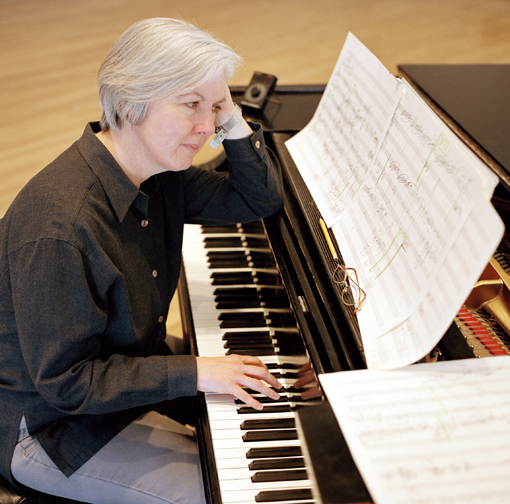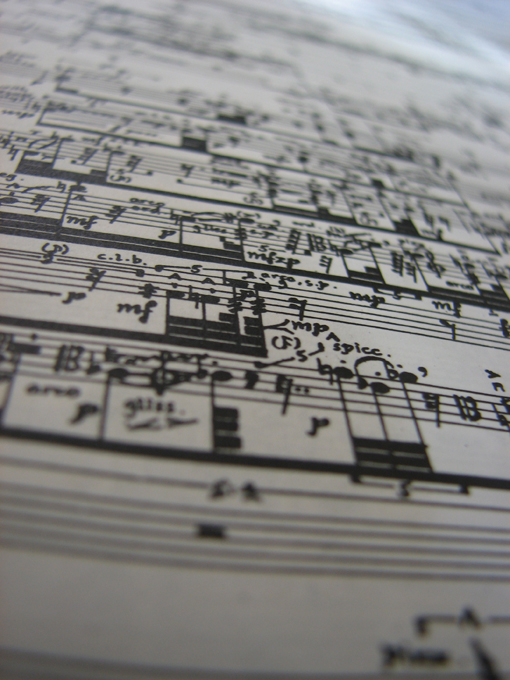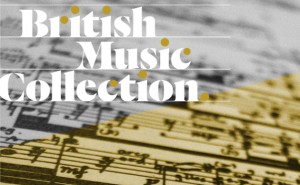Sound and Music promotes challenging contemporary music and sound art through a range of projects, incorporating live events, learning, artist development, and digital platforms. Kealy Cozens gives an overview.
About the author: Kealy Cozens is Creative Project Leader (Data) at Sound and Music - www.soundandmusic.org/
Since our founding in 2009, Sound and Music has been a key national agency for new music in the UK. Our vision is to create a world where new music and sound prospers, transforming lives, challenging expectations and celebrating the work of its creators. Realising that ambition means our work is hugely varied. Whilst composer and artist development is at the core of our programme audience development, live events and touring, network building, and education are all critical.
On one level, Sound and Music can seem to be all about the future as we search out new ways to make and listen to music. That would be to miss an important strand to our work. Namely, collecting British music’s past to inspire the artists of today.
The British Music Collection is our remarkable archive consisting of over 30,000 scores and recordings from British composers. Relocated in 2011, the Collection is now housed in a specially designed unit at the University of Huddersfield. Visitors can access the archive in person or online.
The majority of the collection dates from 1960 onwards, but it also encompasses material stretching as far back as 1900. Visitors to the archive can access published and unpublished works, including many pieces that are out of print or hard to obtain anywhere else. Composers such as Britten, Tippett, Birtwistle, Maxwell Davies, Cardew, Harvey, Weir, MacMillan, Turnage and Adès, are all featured alongside today’s emerging composers and many less well-known, or maybe unjustly neglected, artists. We see it as vitally important that the Collection stays a living and expanding resource. Such an important objective, however, is not without inherent problems.

British composer Judith Weir, whose music features in the Sound and Music Collection (photo © Suzanne Jansen)
The physical space at Huddersfield cannot expand indefinitely, yet at such an exciting time for British music it is ever more important that an accurate record of our past and present is kept. With the help of an advisory group consisting of composers, broadcasters, commissioners and publishers we are devising a new acquisitions policy. Due for publication in the spring of this year, this will guide the development of the Collection.
For the archive to act as a comprehensive and intelligent repository it needs to be able to cater to its users and the changing ways in which they want to explore it. We are not alone in this. Music Information Centres in many different countries are trying to become more accessible and to respond to technological changes.
Digital tools are changing the way in which we discover and explore music as they are for every other form of information. The Collection is stored on a wide range of media including betamax and cassettes. So whilst creative uses of the web offer huge opportunities to Sound and Music and the Collection, we also need to undertake the initial hard graft in converting the works into contemporary formats and fundraising to support that.
By breaking down the barriers for those who cannot access the Collection physically, however, we can open it up to new and broader audiences. Every month we ask a different composer or industry figure to write a short article for us that we call ‘Spotlight.’ In this way we ask the writer to reflect on a piece in the Collection that has been important in their own artistic development or simply something they have loved as a listener. These Spotlight articles show just how important an archive can be in supporting new creative work.
Monty Adkins is a composer, performer and professor in experimental electronic music. Here he is spotlighting Alvarez’ ‘Papaloti’:
Walking into the room in which the British Music Collection is currently housed at the University of Huddersfield is quite awe inspiring. If I had a spare three months I could quite happily be left in there to explore and listen to the wealth of music in the collection. In the end my shortlist was reduced to two scores: the first was the Keyboard Anthology published by the Experimental Music Catalogue comprising beautiful piano miniatures from the early 1970s by Howard Skempton, Gavin Bryars and Hugh Shrapnel amongst others; the second was Papalotl for piano and tape by Javier Alvarez. In the end Papalotl won out - simply because of the vivid memory I have of a truly virtuoso performance of this work by Philip Mead …
When I sat looking at this score again in the Huddersfield library a few days ago it struck me how simple this work looks on the page. Yes, there are a lot of notes, but they are mostly no more complicated than patterns of (dotted) semiquavers, quavers and crochets. However, Alvarez' real skill is in the evolution and development of these patterns. Rhythm is not only the surface driving force in this score it is what articulates its formal development and its structure. That Alvarez can maintain such a high level of rhythmic activity and musical intensity across the work's 14-minute span and keep the listener gripped throughout is a testament to his compositional craft. Even though this work is now twenty-five years old, for me, it is still fresh, vibrant and demonstrates the one of the best examples of what can be done when combining instruments and electronics.

A snapshot of Brian Ferneyhough’s Transit (1972-75), one of the pieces in the collection.
By exploring the nuances of the piece, Spotlight enables the reader to take a closer look at how works from the collection can inspire others. In particular, Spotlight allows us to show how the archive of British music’s past helps inspire new practice today. Chris Mayo is currently involved in Sound and Music’s Embedded programme for emerging composers. Through this he becomes the Composer-in-Residence at Manchester Camerata. Here he spotlights the works of Gordon McPherson in our Collection:
A few years ago (maybe five or six actually) I received a phone call from a friend of mine: ‘Gordon McPherson wants you to call him’ … In retrospect, I'm not entirely sure what he wanted. I remember he was probing me as to why I would want to live in London instead of Glasgow. He also said ‘I like your titles’ though it wasn't entirely clear whether he'd heard any of the pieces these titles were attached to. It was a brief and perplexing phone call and I've never spoken to him since. But it did get me interested in his music and I discovered that I liked his titles too: Born of Funk and the Fear of Failing, Morning Drunk and Buzzard, Brevity can save the Nation, Uncanny Valley, Heh! Voltaire! (Or, Thoughts Whilst Running From The Scene Of The Crime), Maps And Diagrams Of Our Pain, to name a few. Western Darlings is one of sixteen pieces by McPherson in the British Music Collection and possibly my favourite. It was written in 1992 for Orkest de Volharding and is, in the composer's own words:
… an attempt to fuse together the style of writing that had preoccupied me during the mid 80s onwards namely Scottish folk traditional techniques such as psalmody and bagpipe ornamentation – what Scottish composer hasn’t at some point gone through this process! – aligned with more intentionally awkward jarring and messy rhythms to a more distinctly de Volharding sound that had, since my first introduction to it, always enthused me.
It's a fantastic piece of music made doubly fantastic by the fact that it occupies basically the same musical world as Stu Phillips' theme to Quincy M.E. which is both no mean feat and something I wish I could say about more music (Stu Phillips also composed the themes to Knight Rider and Battlestar Galactica and is someone we should all strive to be compared to).
In April 2013 our new programmes for the coming year were underlined by the findings from our public consultation conducted at the start of the year. Developing The Collection will be an integral piece of work in all we do. The programmes launched since then range from development programmes for composers, new artistic projects, and work supporting the teaching of composition in schools. In short we will be seeking to realise our vision in creating a future in which new music and sound prospers, transforming lives, challenging expectations and celebrating the work of its creators. Our archive, and its role in inspiring today’s composers, will be a key part in that.
Kealy Cozens
www.soundandmusic.org/
